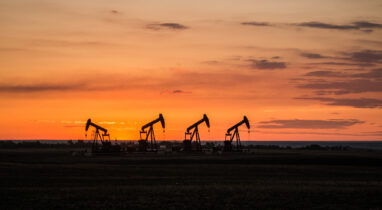Independent modelling by Clean Prosperity and Energy Super Modelers and International Analysts (ESMIA) shows that the federal Liberal Party’s climate plan can achieve a 37% to 41% drop in Canada’s greenhouse gas emissions, relative to 2005 levels, by 2030. Clean Prosperity and ESMIA’s findings are featured in a new report, released today.
“Our modelling shows that the Liberals’ climate policies give them a reasonable chance of achieving their Paris Agreement target. But getting there will be no easy feat. It’s critical that the Liberals implement their policies quickly and prioritize them intelligently,” said Clean Prosperity Executive Director and the report’s lead author Michael Bernstein.
Oil and gas prices are the key factor in determining the extent of emissions reductions within that 37% to 41% range. The Clean Prosperity/ESMIA modelling shows that an increase in fossil fuel prices — which we are currently witnessing — would likely lead to an increase in oil and gas production, and fewer emissions reductions. In such a scenario, emissions from the oil and gas sector still drop, but the Liberals would fall short of their target, barring new policy measures.
In addition to modelling the Liberal plan’s emissions reductions, Clean Prosperity also analyzed the affordability of the plan for Canadians, in collaboration with the consulting firm EnviroEconomics. We found that carbon tax rebates offset most of the costs associated with the Liberal climate policies. In 2030, households earning less than $86,000 come out ahead financially under the plan.
“Our modelling shows that the Liberals’ climate policies give them a reasonable chance of achieving their Paris Agreement target. But getting there will be no easy feat. It’s critical that the Liberals implement their policies quickly and prioritize them intelligently.”
Clean Prosperity Executive Director Michael Bernstein
Based on the Clean Prosperity/ESMIA modelling, the three most important climate priorities for the Liberal government should be: 1) the Clean Electricity Standard; 2) regulations to reduce emissions from the oil and gas sector; and 3) policies to reduce emissions from road and off-road transport. These three priorities represent over three-quarters of the emissions reduction potential to 2030, and will be important for Canada’s long-term decarbonization and economic competitiveness.
Progress to Net-Zero
Clean Prosperity and ESMIA also modelled the impact of the Liberal climate policies on achieving Canada’s 2050 net-zero targets. Modelling shows that the Liberal climate plan makes substantial progress toward net-zero, but 288 Mt of emissions remain in the economy by mid-century, equivalent to just under 40% of today’s levels.
To meet Canada’s long-term decarbonization goals, we recommend that the Liberal government start putting in place some important net-zero building blocks:
- The government needs to do rigorous and transparent modelling to map out the path to net-zero under different future scenarios.
- Net-zero will require massive growth in carbon capture and carbon removal. The government should draft a national carbon management strategy to prepare.
- Achieving net-zero will be much easier if we can apply the full carbon price to industry, and rebate carbon costs to Canadian exporters as part of a border carbon adjustment (BCA). The government needs to expedite the challenging work of designing and implementing a BCA.
- The government needs a net-zero buildings policy to tackle the 30 Mt of emissions still remaining in this sector in 2050 under our modelling.
Read the Report
For more information: media@cleanprosperity.ca




